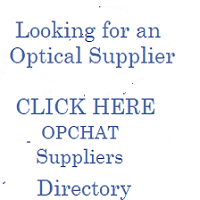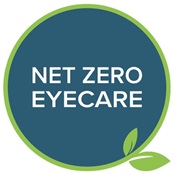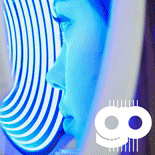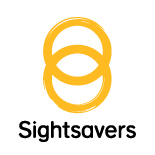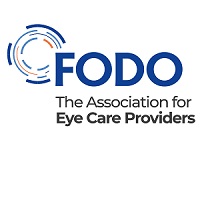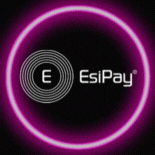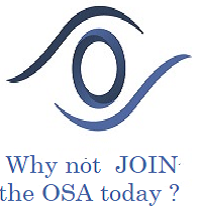General News
New Global IPSOS survey shines a light on the myopia epidemic

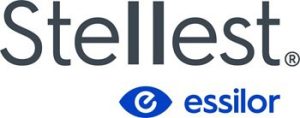
New Global IPSOS survey shines a light on the myopia epidemic
Revealing an urgency for long-term myopia management
A new Ipsos survey(1) commissioned by Essilor® amongst 1,000 UK parents has revealed a serious lack of understanding around myopia in children. Indeed, 94% of parents of myopic children wrongly believe that wearing glasses will solve the problem.
Myopia, or short-sightedness, is predicted to impact half of the World’s population and a staggering one billion people are predicted to have high myopia by 2050(2) making long-term management crucial.
The poll highlighted huge gaps in knowledge amongst parents around myopia:
- The vast majority of parents of myopic children (94%) wrongly believe that having their myopic child wear glasses or contact lenses solves the problem.
- Half (54%) of the parents questioned, including those without myopic children, were unaware that “the earlier myopia starts, the faster it progresses and the more serious it can become”.
- And almost half (48%) of all parents were aware that very short-sighted people have an increased risk of sight threatening eye complications, with the same amount (48%) unaware that myopia is progressing faster today than in previous generations.
- Of the factors that may be associated with myopia, 56% of all parents did not know that lack of exposure to natural light was one of them.
- In fact, almost two thirds of all parents (61%) admitted to finding it increasingly difficult to know exactly what to do to ensure that their child is and remains in good health.
Charlotte Timbury, Dispensing Optician and Director of Medical & Professional Affairs for EssilorLuxottica North Europe said: “It’s evident that many parents and even those whose children are myopic, lack accurate information about myopia.
“Worryingly, many think that simply making their child wear glasses with corrective lenses solves the problem, unaware that myopia can progress even with corrective lenses. Many are also unaware that the younger a child becomes myopic, the more likely they will develop higher levels of myopia(3).
“However, there are ways to slow it down with lifestyle changes and wearing a myopia control spectacle lens, such as Essilor Stellest lenses, which will correct myopia and slow down its progression, and we’re working to help spread awareness of this amongst parents.”
More than correction: There is an urgency for long-term myopia management
The survey reveals that the majority of parents take a short-term view of myopia management, focusing on immediate compensation for the problem, overlooking the importance of follow-ups once the correction is in place and the existence of solutions to slow down the progression.
- After correction, 69% of parents of myopic children are no longer really worried about their child’s eyesight.
- 78% of parents of myopic children even consider that they have done all they can and that there is not much left to do.
- 79% of parents of myopic children wrongly believe that their child’s myopia is likely to improve.
- More than two thirds (69%) of parents of myopic children consider that their child’s myopia will probably disappear in the next few years.
- Overall, a third (32%) of parents are not aware that adopting appropriate habits such as taking a break when focusing on close objects for long periods and spending time outdoors could be beneficial in slowing down the onset of myopia.
- And three quarters (76%) have not heard about spectacle lenses to slow down the progression of myopia.
Charlotte continues: “Myopia must be addressed and managed as soon as possible in childhood, and thankfully, recent developments in myopia control spectacle lenses can help this. Essilor Stellest lenses are safe and easy to wear and enable the child to continue to wear their spectacles without any compromise. In fact, over a 5-year period, myopia progression was two times slower on average with Essilor Stellest lenses*(4).
How Essilor is raising awareness amongst parents:
Essilor® is currently working with Mumsnet.com, the UK’s “biggest website for parents” to host an ‘ask the expert’ Q&A answering questions on the topic of myopia and eye health. It is also running a ‘class of myopia’ event for families on the 29 November at its Kensington showroom, where children will be taken on a space adventure in a quest to learn about the importance of clear vision and fight the myopia epidemic in a fun and interactive way.
Experts will deliver EyestarTM Mission at the event, a new educational programme created by Essilor® to help fight the myopia epidemic, and children will get to follow the adventures of space characters Charlie, Skyler and Eyo.
Charlotte adds: “EyestarTM Mission empowers children and parents to take ownership of their eye health. The session will combine short videos, activities and key learnings for a comprehensive and memorable experience and children can ear badges for reaching milestones along the way.”
Earlier this year, Essilor® also launched a multi-channel media campaign across YouTube, Facebook, Instagram, LinkedIn, Amazon Prime and Disney+ to help spread awareness about myopia management. Part one of the awareness campaign, featuring a 30 second video commercial and digital display adverts, was seen 50 million times during June and July, and part two which ran from 23 September to 17 November achieved an additional 65 million views.
About Essilor® Stellest®
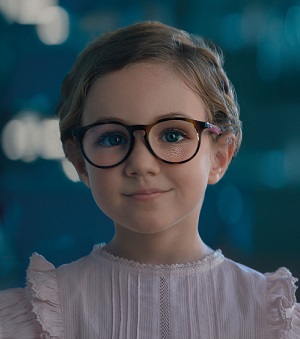
Essilor® Stellest® lenses are Essilor®’s best solution for fighting myopia in children because they have two functions. First, they correct myopia, giving the wearer sharp vision. And second, they slow down its progression by positioning a volume of non-focused light in front of the retina, following the retina’s shape which sends a signal to slow down eye elongation.
Essilor® Stellest® lenses slow down the progression of myopia by 67% on average, compared to single vision lenses, when worn 12 hours per day** (5).
REFERENCES:
- International survey conducted by Ipsos in 6 countries on 6007 parents with at least one child aged from 5 to 17, from a representative sample of individuals aged from 25 to 60 in terms of age, gender, occupation, region. UK: 1000 interviews / Italy: 1001 interviews / France: 1000 interviews / Brazil: 1001 interviews / India: 1005 interviews / China: 1000 interviews. Online interviews from June 24th to July 15th 2024
- Source: Holden BA, Fricke TR, Wilson DA, et al. Global Prevalence of Myopia and High Myopia and Temporal Trends from 2000 through 2050. Ophthalmology. 2016;123(5):1036-1042. doi:10.1016/j.ophtha.2016.01.006
- Bullimore MA, Richdale K. Myopia Control 2020: Where are we and where are we heading? Ophthal Physiol Opt 2020;40:254–270.
- Li X, Huang Y, Liu C, Yin Z, Cui Z, Lim EW, Drobe B, Chen H, Bao J. Myopia control efficacy of spectacle lenses with highly aspherical lenslets: results of a 5-year follow-up study. Presented at the Association for Research in Vision and Ophthalmology (ARVO)Annual Meeting, Seattle, 2024.
- Bao, J., Huang, Y., Li, X., Yang, A., Zhou, F., Wu, J., Wang, C., Li, Y., Lim, E.W., Spiegel, D.P., Drobe, B. and Chen, H., 2022. “Spectacle
Lenses with Aspherical Lenslets for Myopia Control vs Single Vision Spectacle Lenses: A Randomized Clinical Trial.” JAMA Ophthalmol. 1 40(5), 472 – 478. https://doi.org/10.1001/jamaophthalmol.2022.0401.
- Source: Euromonitor, Eyewear 2023 edition; Essilor International company; worldwide retail value sales at RSP.
- Quantitative research conducted among a representative sample of 958 independent ECPs by CSA in February 2019 – France, the UK, Germany, Italy, Spain, the US, Canada, Brazil, China, India.







